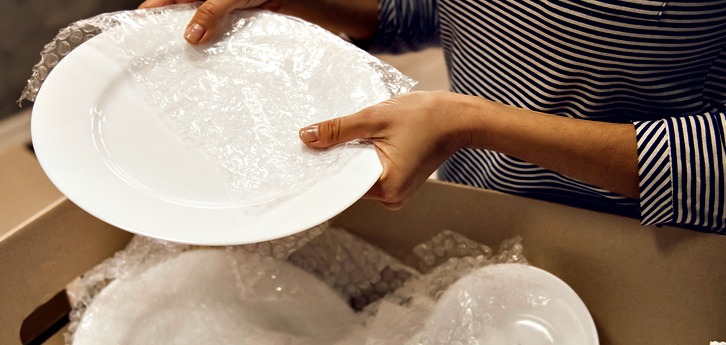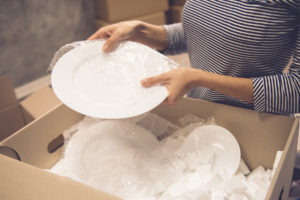How to Pack Like a Pro!

10 Jul 2017
How to Pack Like a Pro!
Once you’ve decided how you’re going to move and you’ve gathered all your supplies, use these packing tips to make sure your valuables come out of their boxes in good shape.
- Use the right size boxes. Put heavy items, like books, in small boxes; light items, like linens and pillows, in bigger ones
- Put heavier items on the bottoms of boxes, lighter items on top. And if you’re loading the truck yourself, pack heavier boxes first, toward the front of the truck, for balance.
- Don’t leave empty spaces in the boxes. Fill in gaps with clothing, towels, or packing paper. Movers often won’t move boxes that feel loosely packed or unbalanced.
- Avoid mixing items from different rooms in the same box. It will make your packing quicker and unpacking a lot easier, too.
 Label each box with the room it’s destined for and a description of its contents. This will help you and your movers know where every box belongs in your new place. Numbering each box and keeping an inventory list in a small notebook is a good way to keep track of what you’ve packed—and to make sure you still have everything when you unpack.
Label each box with the room it’s destined for and a description of its contents. This will help you and your movers know where every box belongs in your new place. Numbering each box and keeping an inventory list in a small notebook is a good way to keep track of what you’ve packed—and to make sure you still have everything when you unpack.- When taping boxes, use a couple of pieces of tape to close the bottom and top seams, then use one of the movers’ techniques—making a couple of wraps all the way around the box’s top and bottom edges, where stress is concentrated.
- If you’re moving expensive art, ask your mover about special crating. Never wrap oil paintings in regular paper; it will stick. For pictures framed behind glass, make an X with masking tape across the glass to strengthen it and to hold it together if it shatters. Then wrap the pictures in paper or bubble wrap and put them in a frame box, with a piece of cardboard between each framed piece for protection.
- As you pack your dishes, put packing paper around each one, then wrap bundles of five or six together with more paper. Pack dishes on their sides, never flat. And use plenty of bunched-up paper as padding above and below. Cups and bowls can be placed inside one another, with paper in between, and wrapped three or four in a bundle. Pack them all in dish-barrel boxes.

- Movers treat TVs like any other piece of furniture, wrapping them in quilted furniture pads. However, plasma TVs require special wooden crates for shipping if you don’t have the original box and can be ruined if you lay them flat. If you’re packing yourself, double-box your TV, setting the box containing the TV into another box that you’ve padded with packing paper.
 Here’s what you shouldn’t put in the moving van.
Here’s what you shouldn’t put in the moving van.
- Flammable items, including fuel and aerosol cans.
- Liquids of any kind, but especially cleaning agents. (Never put ammonia and bleach together!)
- Jewelry (Keep it with you.)
- Important records, such as passports, birth certificates, Social Security cards, and legal, financial, and medical records. (Keep them with you.)
- Candles, which can melt and make a sticky mess.

